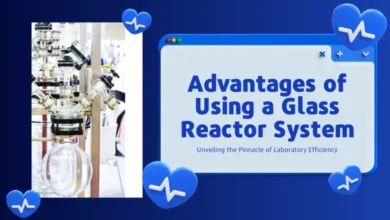Navigating the Regulatory Landscape of Life Science Marketing: A Comprehensive Guide

Companies promoting pharmaceuticals, medical devices, and health services must follow strict regulations. Complex legal guidelines are in place to protect patients and consumers. This guide aims to assist life science marketers in effectively disseminating information while adhering to regulatory policies.
Understanding Marketing Regulators
Various government bodies establish standards for responsible industry marketing communications:
- The FDA is in charge of making sure ads for prescription treatments are accurate. They check ads for healthcare professionals and consumers.
- FTC – Federal Trade Commission monitors overall truth in advertising across sectors. Addresses false claims or misleading promotions.
- The Office of Inspector General at the Department of Health and Human Services known as HHS-OIG. Make sure healthcare companies don’t give kickbacks or use improper influence.
- ACCME – Accreditation Council for Continuing Medical Education governs impartiality standards for pharmaceutical sponsored medical education events.
Knowing these key players helps inform appropriate messaging guardrails across channels.
How to Make Ads and Websites for Patients
Marketing for life science products presents unique challenges. Unlike other fields, agencies operating in this space must have an in-depth understanding of regulatory laws to navigate the intricacies of the market effectively. This is where the need for specialized biotech marketing companies becomes evident.
In creating materials for patients, prioritizing simplicity is essential. Given that patients often turn to the web and TV for health information, communication must be straightforward. It is crucial to avoid complex scientific jargon and opt for clear, concise language. Videos should be short, engaging, and visually appealing. It’s essential to provide comprehensive explanations of benefits and potential side effects transparently.
To maintain transparency, major risks should be outlined upfront, avoiding the concealment of hard truths in fine print. Real patient stories and photos can be included only with explicit consent. Additionally, when collecting personal information, obtaining clear consent is imperative.
Strict adherence to medical advertising rules is vital for ensuring consumer protection. In case of regulatory warnings, swift action should be taken to rectify errors. Collaboration with review teams during the initial stages helps identify and address issues early on. The goal, especially for professionals in biotech marketing companies, is to create trustworthy resources that provide hope and help to patients. By sticking to basic facts expressed in simple language, these professionals empower doctors to make medical judgments while offering patients peace of mind.
Abiding by Relevant Codes and Guidance
Complex regulatory documents provide marketing direction:
- FDA Advertising Code – Defines standards for consumer ads from benefit claims to risk details and directions for use.
- The PhRMA Code is a set of principles for ethical drug promotion and health education funding. It is used by the Pharmaceutical Research and Manufacturers of America industry.
- The Anti-Kickback Statute prevents people from giving money or gifts to influence medical recommendations.
- The ACCME Standards dictate that medical education must be fair, balanced, and transparent, especially concerning conflicts of interest. They also emphasize that it should not be promotional.
It’s essential to study these codes thoroughly to ensure compliance. Consider specialized legal and compliance teams to navigate nuances.
Ensuring Responsible Medical Communications
Special considerations apply when targeting medical professionals with pharmaceutical and device marketing:
- Claim Accuracy – Verify all claims and citations. Overstating product benefits risks warning letters.
- Balanced Information – Present efficacy and safety data together neutrally, allowing medical judgment.
- Transparency – Disclose authors, funding sources, and collection methods for informational materials. Avoid using strategically misleading tactics.
Exaggerations and incomplete portrayals significantly undermine credibility. Provide robust evidence to facilitate informed decision-making.
Considering Patient Privacy and Targeting
Healthcare marketing leverages patient data requiring careful handling:
When it comes to sharing information in the healthcare field, there are important rules to follow. One key rule is HIPAA Compliance, which stands for the Health Insurance Portability and Accountability Act. This rule ensures that any messages about someone’s health are kept private and confidential. Another important rule is about using patient stories in campaigns. Before sharing these stories through words or pictures, it’s crucial to get permission from the patients to respect their privacy. Also, when partners provide information about patients for targeted outreach, they must be clear about why they’re sharing it and make sure to keep it private and secure. These rules are in place to make sure that everyone’s medical information is treated with respect and care.
Honor patient stories and earn trust by responsibly utilizing information. The life science realm balances advancing cutting-edge innovations with consumer well-being. Marketers play a vital role introducing therapies while elevating standards benefiting all. Conscientious adherence to complex regulations ensures this vision becomes reality.
How to Be Truthful in Ads and Brochures
When making pamphlets, websites or other materials about medicines or health devices, you must be 100% truthful. Don’t exaggerate what your product can do. Display both the benefits and potential risks. List all facts and let medical pros decide if it will help patients. Make sure to double-check all studies and stats. Overpromising could get you in big trouble and make customers lose trust. Stick to only what you can substantiate. Also, say who made the materials and who paid for them to be transparent. These rules might seem strict but they help folks stay safe. Truthfulness lays the groundwork for beneficial healing products that save lives ethically and effectively.
Keys for a Successful Health Fair Booth
Health fairs let companies explain illnesses and medicines to regular people in plain language. If you set up a booth, follow a few rules. Focus primarily on listening to what visitors ask rather than pushing products. Show how you help people feel better in a caring way. And remember privacy – don’t collect personal details unless given full permission that shows how it will be kept secret and safe. Also don’t give gift cards or prizes meant to sway opinions. Just focus on teaching folks about health with no strings attached. Following these guidelines helps our community best. We’re all on the same team working towards longer, happier lives!
Staying on the Right Side of the Law
Laws exist to guide health marketing down an ethical path that avoids deception. With peoples’ well-being at stake, extra caution is essential. While rules can feel strict at times, they hold good habits and accountability. Study them thoroughly and craft materials conservatively staying well within lines. Compliance specialists can assist decoding intricacies as well. When in doubt, remember the noble aim of healing. Make choices focused fully on transparency and wisdom. Uphold standards moving science forward through truth. Staying firmly on the right side of the law keeps all interests aligned.
Frequently Asked Regulatory Questions
How often do marketing rules change?
Regulations evolve constantly with new legislation and sub-guidances. Continual monitoring helps avoid missteps.
Are international marketing rules aligned?
Varies greatly. Account for global variances. Optimize locally.
Can materials be repurposed across audiences?
Rarely. Customize medical versus patient facing assets to comply with audience standards.
Is a legal review sufficient or still risky?
Checking if something is legal is a good start, but it might still be risky. It’s like making sure you follow the rules, but you also need to be extra careful to avoid any problems or dangers. Always double-check to stay safe!
Could regulatory violations impact R&D funding?
Yes. Unethical marketing damages corporate trust and standing required for clinical trials.






